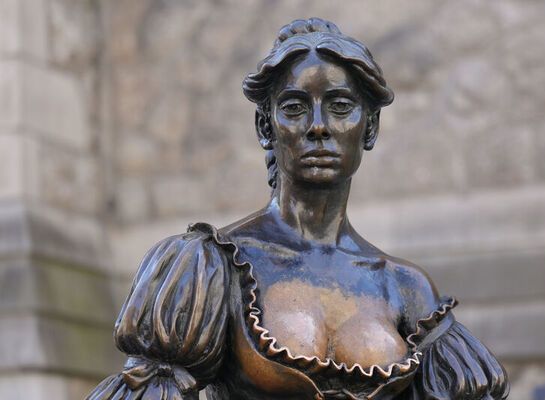So, few people who knew him as a youngster would be surprised that he found his calling as a provocateur or, to use the more polite term, a performance artist.
"My belief is that you've got to provoke people to get them to move, to get them to change," said Henry, who lives in Brooklyn with his wife Jean and their 5-year-old son Seamus. "I use my body as a catalyst to bring about some kind of change in perception. I usually address social and political issues."
That was certainly the intention when the sometime carpenter was invited to the 10th Open International Performance Art Festival in Beijing last September. However, once at the festival - which, featuring 300 artists over two months, was the largest event of its kind ever -- Henry reworked his entire idea so as not to unduly offend local sensibilities.
It's no easier a task to relate the details of an art performance than it is to describe a Picasso or a Matisse. Nonetheless, months after the fact, Henry outlined how he executed his Beijing art performance, which looked at "herding" in modern society and how people often unquestioningly follow those in positions of authority.
With local help, he acquired police uniforms for 10 volunteers -- five of whom were foreign-born and five Chinese. "And I wore a sort of black Mao uniform," he said. At Henry's direction, his police asserted control over an audience of about 80, demanding they remove their shoes, fill out forms and surrender passports and IDs. The documents were placed in a bag that was then pulled by a rope up through the roof. "People were going 'What?' That was a wonderful moment," he recalled. Eventually, audience members were returned their property.
"The feedback from everyone was very positive," said Henry, who has plans to return the World Expo in Shanghai in May. The artist, who is married to a Canadian of Chinese ancestry (though she has not visited), said he felt great enthusiasm and energy in Beijing. "It's at the stage that America was at maybe 60 years ago," he said.
Henry's efforts in China have had the backing of government officials in his own country. "Culture Ireland are very progressive," he said. "They don't want an artist to go over there and just sit in a corner. They want interaction with local people."
Performance art is ideal for that, argued the 45-year-old Henry, who has a BA and an MA from the Geneva Ecole Superieur des Beaux-Arts in Switzerland.
"I think it's a very powerful medium of expression. Unfortunately, it's not taken very seriously by the art world," he said. "It's always considered experimental or fringe. It's not taken very seriously by the art market either, because it's very difficult to sell. Although, now it's becoming a little trendy.
"You can sell drawings you make before you do a performance -- the whole plan you have in your mind -- or you can sell photo documentation or video documentation, which museums might go for," he said. "But it's a very difficult medium in which to make a living as an artist."
Yet, the viewer can get better value from that medium than others, he contended.
"If you walk through a gallery or a museum, how much time do you spend in front of an art work? Maybe 30 seconds or maybe five seconds? It depends on how it jumps out at you. Whereas a performance art piece could be five minutes or 30 minutes or 45 minutes long," he said.
"It can really stay with you or get lodged in a completely different place in your mind," Henry said. "You'll talk to other people about it. And if it's a really good, well thought-out piece, you'll remember it maybe forever."








